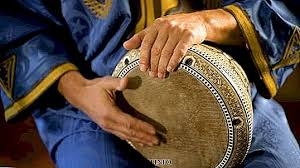ZUBAIR QURESHI Srinagar, Nov 21 (IANS) Just like other civilisations, mud houses and other clay objects were frequently used in the ancient times in the Kashmir Valley, but with time their usage have declined. With the advent of technology, these clay objects have been replaced by modern items but 'tumbaknari', a mini drum which is cast in a clay funnel like case, is still used in the Valley. Be it on the occasion of marriage or other ceremonies, the use of tumbaknari is inevitable during any musical gathering. It is a tool made by mixing clay and water. Its neck is long and hollow. After making the shape with wet clay, it is burnt in a furnace, after which colours and pigments are applied to it. According to experts, tumbaknari came from Central Asia and over time became an important part of the culture here. While this particular instrument is made in many villages of the Valley, now modern techniques are also being used in its production. Earlier, potters used to make tumbaknari or other pottery on a hand-operated wheel, but now electric wheels are used. According to Mohammad Siddiq, a craftsman who makes this musical instrument in Srinagar, though the demand for pottery has decreased in the Valley, the demand for tumbaknari has not. He said this instrument is a part of the culture of the Valley with which people are still associated. "I work in my factory from morning to evening and produce at least 50 tumbaknaris, which are bought by the buyers," he said. Siddiq said that throughout the year, he gets orders from dealers to whom he supplies goods. He added that a large tumbaknari is sold in the market for Rs 150-200.
Tumbaknari: The Sound of the Valley
- by Rinku
- November 21, 2022 2 minutes

Tumbaknari: The Sound of the Valley











